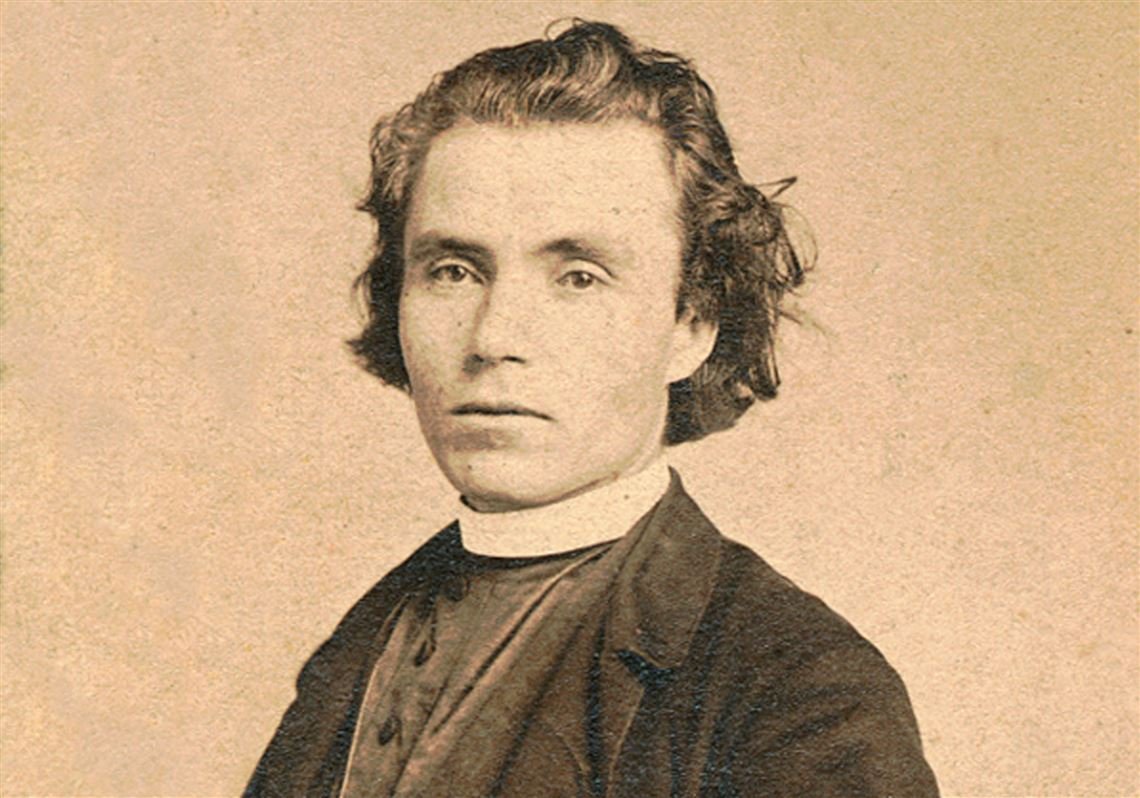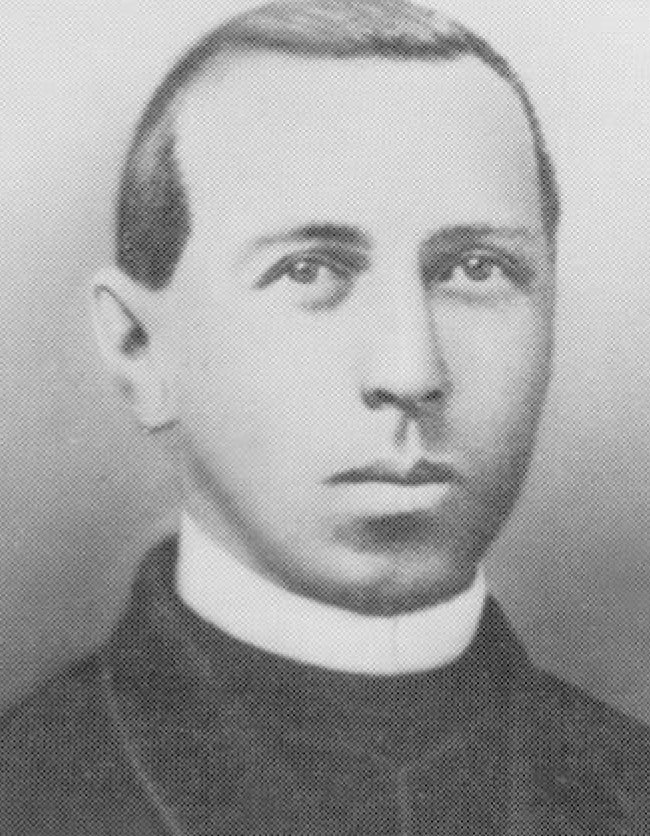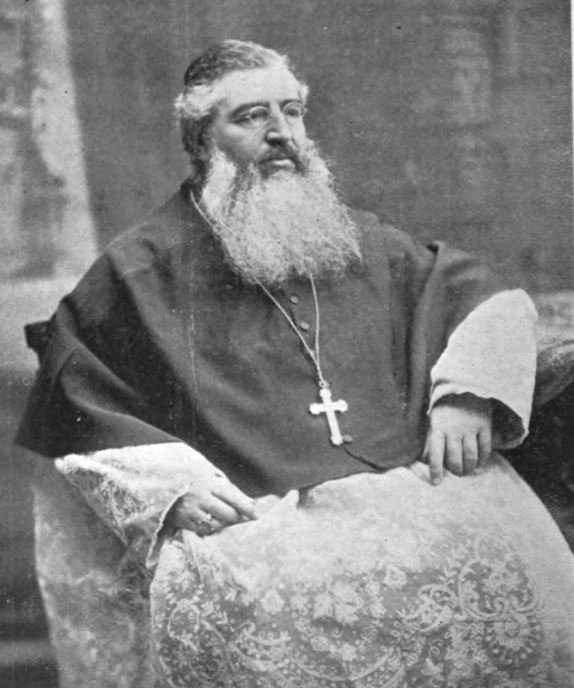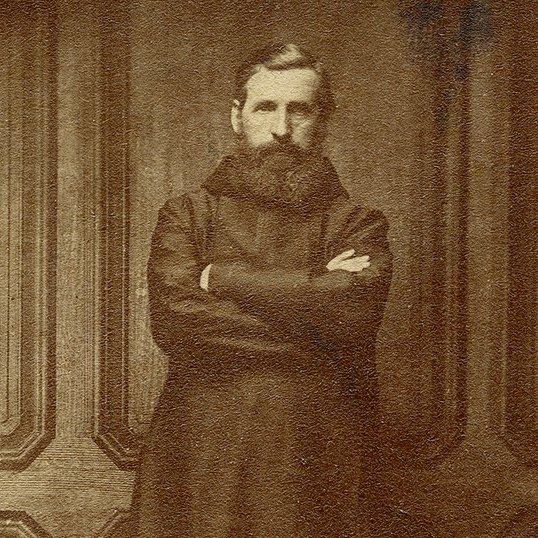
Since 1858, the Benedictines have been part of the Church in Northern Kentucky.
In 1858, Covington's first Bishop, George Aloysius Carrell, invited Archabbot Boniface Wimmer to send Benedictines from his new foundation in Latrobe, PA, to minister to the growing missionary needs in the Diocese of Covington.
Soon, the Benedictines established a priory in Covington at St. Joseph Church and their work extended as far as Augusta.
Wimmer spared no cost in his generosity to the Diocese of Covington by sending his finest monks for missionary service. They would include: Fr. Oswald Moosmueller, Monastery Prior and Seminary Rector; Fr. Eberhard Gahr, an accomplished missionary; Fr. Emmeran Blummel, the first chaplain killed in action in any American battle (Civil War); Fr. Celestine Engelbrecht, Monastery Prior; Leander Schnerr, who would later become the third Archabbot of Saint Vincent; and Fr. Luke, Wimmer’s nephew.
The cleric and lay brother monks also made numerous cultural and artistic contributions. In 1876, the Benedictines established Monte Cassino Vineyard near the Peaselburg neighborhood, where thy produced Altar wine.
The growing Catholic landscape also called for new churches and altars. In 1862, Br. Cosmas Wolf, a master sculptor and artisan trained in Munich, arrived from St. Vincent to establish the Covington Altar Stock Building Co. With a team of artisans, he helped design churches and furnish them with altars, statues, and paintings. Br. Cosmas would also become the first art instructor to the young Frank Duveneck who apprenticed in the studio.
Photos L-R clockwise:
Archabbot Boniface Wimmer; Rev. Emmeran Blummel; Rev. Eberhard Gahr; Rev. Oswald Moosmueller; Archabbot Leander Schnerr; Br. Cosmas Wolf; Rev. Celestine Engelbrecht; and Rev. Luke Wimmer.









Sister Alexia Lechner served as the first Superior for the new Benedictine community of women in Covington in 1859.
Aiding the early missionary monks in their ministry were the Benedictine Sisters — a constant and faithful presence in the Diocese from 1859 through today.
In the late 1850s, Benedictine Fr. Louis Mary Fink, pastor of St. Joseph's Covington, requested Benedictine sisters Erie, PA to come to Covington to teach the German-speaking students of the parish school. Three sisters arrived in June 1859, led by Mother Alexia Lechner. Their first small monastery was built on Twelfth Street and dedicated to St. Walburg. In 1863, St. Walburg Academy for boarders and day students was established. The academy operated as an elementary school for young women. Later, a high school program was added. Income from the Academy helped support the sisters apostolate in the parish schools.
In 1903, the Sisters of St. Benedict of St. Walburg's Monastery purchased the eighty-six acre W.C. Collins farm and residence about nine miles from Covington. The Property was named Villa Madonna and placed under the patronage of Our Lady of Good Counsel. In 1916, the novitiate moved from Covington to Villa Madonna, and the motherhouse in 1922. The sisters gather together at regular times to pray the Liturgy of the hours.
In 1918, they were dispatched to Covington and rural eastern Kentucky to tend to those suffering from influenza. The Sisters were also involved in nursing, and administering hospitals from 1946 to 1986. In 1947 the sisters took over operation of Mount Mary Hospital in Hazard, Kentucky. In 1977, Sr. Sylvester Shea taught ESL to Vietnamese refugees for Catholic Social Services. Sr. Andrea Collopy served for ten years as a volunteer EMT with the Crescent Springs Fire Department. At its height in the early sixties, the number of sisters was just over 270.
In 1921, the Sisters opened Villa Madonna College as a Normal school at Villa Madonna property; in 1929 it became a diocesan teachers college, sharing administration and instruction with the Sisters of Notre Dame, and the Congregation of Divine Providence, and moved to the St. Walburg Academy property in Covington as it was centrally located and on the streetcar line.
St. Walburg Academy closed in 1931 to make room for the growing college program. The old St. Walburg Convent on East 12 Street in Covington was used as a convent for the sisters working at St. Joseph School and Villa Madonna College. Villa Madonna College was renamed Thomas More College in 1968 and relocated to its present site in Crestview Hills, Kentucky. That same year, St. Walburg convent and the college building on W 12th St. were demolished. In 2018, it became Thomas More University.
Today, the Sisters of St. Walburg Monastery continues the same rhythm of life that enlivened the early missionary sisters over 150 years ago. In addition to the daily tasks of life, the sister serve the Church and society in a myriad of ministries on and off the monastery grounds. Serving the community through sponsored ministries at Villa Madonna Academy and Villa Madonna Montessori, the sisters also serve as educators, health care workers, social workers, pastoral ministers, spiritual directors, counselors, administrators, artists, musicians, and writers.
Sr. Aileen Bankemper, O.S.B.
Prioress of St. Walburg Monastery
“The beauty of the Rule is its adaptability to each age and time. Benedict encourages his followers not to go it alone. It is together with Christ leading us, we go and grow into the heart of God.”






St. Walburg Oblates
Since the earliest days of St. Walburg, the Monastery has welcomed Christian women and men living out their Baptismal Promises to join the life of the community as Oblates of St. Benedict. If you are interested in becoming an Oblate of St. Walburg Monastery, please contact:
Sr. Mary Tewes, O.S.B. at (859) 331-6324 marytewes@gmail.com


